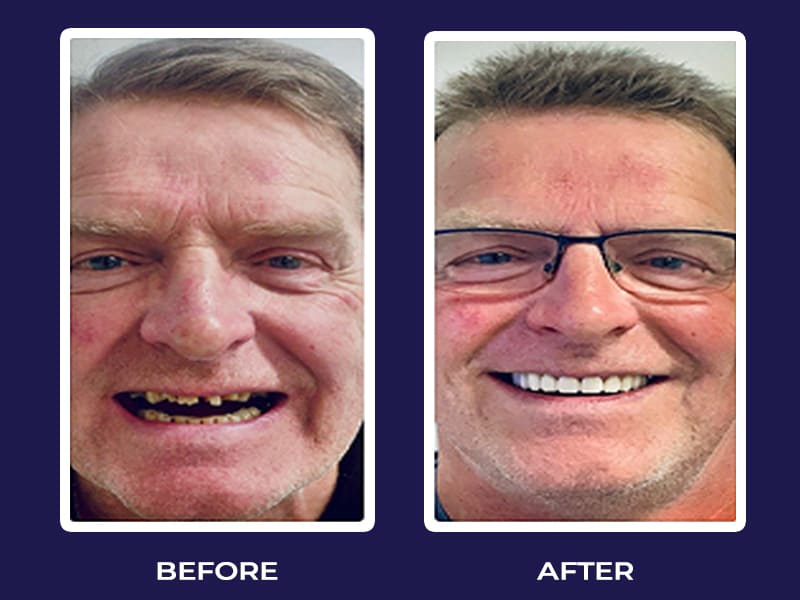
What composite bonding can and can’t treat!
April 21, 2024
Composite bonding, also known as dental bonding, is a popular cosmetic dentistry procedure that can address various dental imperfections and enhance your smile’s appearance. However, it’s essential to understand both its capabilities and limitations to determine if it’s the right treatment for you. In this guide, we’ll discuss the conditions composite bonding works for and those it may not be suitable for.
What is Composite Bonding?
Composite bonding involves the application of a tooth-coloured resin material to repair, reshape, or enhance the appearance of teeth. It’s a versatile and minimally invasive procedure that can be completed in a single visit to the dentist’s office. Composite bonding is commonly used to correct minor aesthetic concerns and improve the overall look of your smile.
Conditions Composite Bonding Works For
1. Repairing Chipped or Cracked Teeth
Composite bonding is an excellent option for repairing minor chips or cracks in teeth, restoring their appearance and function. The resin material can be precisely sculpted and bonded to the affected tooth to seamlessly blend with your natural teeth.
2. Closing Small Gaps Between Teeth
If you have small gaps or spaces between your teeth, composite bonding can be used to fill in these areas and create a more uniform smile. By adding composite resin to the teeth, your dentist can effectively close gaps and improve the overall symmetry of your smile.
3. Reshaping Irregular or Misshapen Teeth
Composite bonding can reshape irregular or misshapen teeth, helping to create a more harmonious smile. Whether you have pointed or disproportionately sized teeth, your cosmetic dentist can use composite resin to sculpt and contour the teeth for a more balanced appearance.
What Composite Bonding Doesn’t Work For

1. Large Gaps or Spaces Between Teeth
While composite bonding can effectively close small gaps between teeth, it may not be suitable for larger spaces or significant orthodontic issues. In such cases, alternative treatments like orthodontics or dental implants may be more appropriate.
2. Severe Tooth Decay or Damage
Composite bonding is best suited for minor dental imperfections and cosmetic enhancements. It may not be suitable for treating severe tooth decay, extensive damage, or structural issues. In such cases, more comprehensive restorative treatments may be necessary.
3. Stained or Discoloured Teeth
While composite bonding can cover minor stains or discolouration, it may not provide long-lasting results for deeply stained or discoloured teeth. Professional teeth whitening or other cosmetic procedures may be more effective in addressing severe discolouration.
Find Your Cosmetic Dentist for Composite Bonding
If you’re considering composite bonding to improve your smile, it’s essential to consult with a trusted cosmetic dentist. Whether you’re in Hampshire or Dorset, Smile Circle can connect you with the best dentists in your area who specialize in cosmetic dentistry, including composite bonding.
For more information or to find a cosmetic dentist near you, visit Smile Circle’s website today at smilecircle.com/dentists.
Unlock the potential of your smile with composite bonding – discover the transformative power of cosmetic dentistry with Smile Circle!
Here Are Some Relevant Pieces You Can Read About Composite Bonding
- Benefits Of Composite Bonding And After Care Tips
- What Is Cosmetic Dentistry And Why Do We Need It
- your invisalign faqs answered
- what composite bonding can and cant treat 2
- composite bonding the art of smile transformation
- benefits of composite bonding and after care tips
- how dental bonding can improve your smile
- porcelain veneers vs composite veneers
Here Are Some Relevant Pieces You Can Read About Composite Bonding
- Benefits Of Composite Bonding And After Care Tips
- What Is Cosmetic Dentistry And Why Do We Need It
- your invisalign faqs answered
- what composite bonding can and cant treat 2
- composite bonding the art of smile transformation
- benefits of composite bonding and after care tips
- how dental bonding can improve your smile
- porcelain veneers vs composite veneers

 Head Office - UK - Unit 1 B 132 Weyhill Road, Andover, Hampshire England, SP10 2PR.
Head Office - UK - Unit 1 B 132 Weyhill Road, Andover, Hampshire England, SP10 2PR. 









